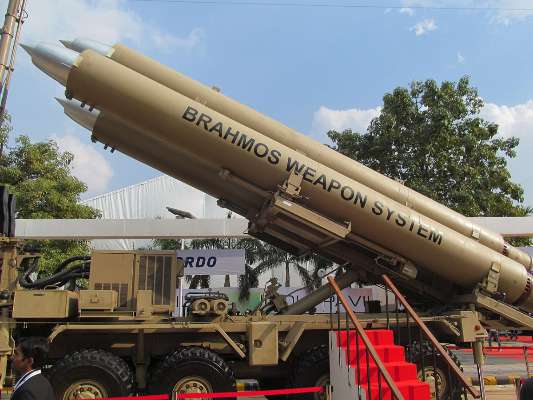India is on a new adventure, namely, to enter the global weapons market. The Make in India programme supposedly had such a component at the very conceptual stage. Now, defence minister Nirmala Sitharaman took matters to a new level by saying the country is seeking a market for selling missiles. Not a bad idea, but not many might be impressed by this perceived over-zealousness to place India on the hi-tech defence sales circuit; and this for a variety of reasons.
For one, it is a moot point as to how many nations would look up to India for this kind of a steadily updated, advanced, laser-sharp technology. India may have a reputation with its Agni, Brahmos and other missiles, but truth is also that these have not been tested in a real war. India is down the line among the nations engaged in missiles production, where developed nations such as the US (with its Tomahawk, Minuteman, Javelin, Harpoon, Maverick to Hellfire), France (with its Aerospatiale AS12, Apache, ENTAC), Russia (with missiles families such as Igla, P-1, K-13, Chusovaya, Sarmat) besides China (with Red Arrow, PL variants, DF variants, Hongqi variants) and Israel (with its David’s Sting, Barak, Delilah, Gabriel and others) lead the way. Most of these mentioned and many more have all been used in real combat situations and their efficacy is well tested in wars where they have proven to be excellent. India has not had a full-scale war in recent decades; and Kargil was just a shadow of a battle. Those who put their money in billions of dollars to purchase military and defence equipment would think twice before sourcing anything vital, even granted that commissions prominently may push arms sales in most consumer nations. For the purchaser, these equipment have to show past performance, ability of the producer not only to promptly deliver spares but also to showcase an agile and open ended capability to research and develop newer variants that easily assimilate existing hardware. When it comes to a nation’s security, no leadership in any other country worth its salt would look more for commissions than for accuracy, efficacy and precision of the equipment they acquire for defence. This could be a prime reason why India never had a role worth mention in the arms market, and this goes true even for ordinary guns that constables carry.
Americans, Russians, Germans, French all have arsenals full of tried and tested defence-ware. So do Israelis, thanks to their non-stop supplies to the US and the UK. Jewish business brains and production capabilities are behind this success. The Iraq war of 2003 March-May was also an occasion meant to test the efficacy of the American weapons systems. A war was created when there was no need for one; but missions were accomplished.
Sitharaman’s take is that Vietnam has evinced interest in Indian missiles. The defence attaches’ meet called by the defence minister in Delhi attended by sleepy officials from Indian missions abroad were asked to look for a market for Indian weapons. Good, if there’s a market. Chances are that this will not take India far as this nation has hardly engaged in a real war in recent times and proved its weapons might. Even the Russians, who continue tapping the global arms and related defence weapons market, face question marks over their efficacy. This is true even of the nuclear submarines India took from Russians.
One may question as to who requires missiles for war now. Not many nations are in a war mode other than the superpowers such as the US, Russia, France – or China, India and Pakistan. Lately, Saudi Arabia has joined in. None of these nations might turn their attention to Indian weapons or missiles. The rest of the nations are living in peace, minor skirmishes apart. Small nations as a rule are ‘protectorates’ of big nations. They would not waste their money on missiles, as they are already giving protection money to the US, France or the UK. Notably, a substantial amount of these big nations’ income every year is for their services on offer to “protect” small nations from external aggressions.
First and foremost, India would need to go for an image makeover. The first requirement is to earn a name for Indian technology and firepower. India has a name in space technology. It has made some strides in this field due to the fact that some past Prime Ministers have taken personal interest. Hence, it is not faced with bureaucratic red tape. Space scientists are, as a rule, allowed to have their way with technology. This could be a reason why Indian satellite launch services have been acknowledged in the world market. This particular field has been downgraded as low-tech and not really profit making. Every nation needs an eye in the sky for peaceful, developmental purposes which need is satisfied by satellites. Missiles are an altogether different proposition, unless of course proven otherwise. The Indian government has to prove that it has a better understanding of such things at a global level.

